
























The Power of Action
Further images
-
(View a larger image of thumbnail 1
)
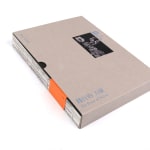
-
(View a larger image of thumbnail 2
)
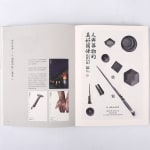
-
(View a larger image of thumbnail 3
)

-
(View a larger image of thumbnail 4
)

-
(View a larger image of thumbnail 5
)

-
(View a larger image of thumbnail 6
)

-
(View a larger image of thumbnail 7
)

-
(View a larger image of thumbnail 8
)
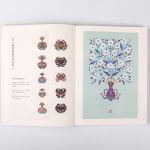
-
(View a larger image of thumbnail 9
)

-
(View a larger image of thumbnail 10
)

-
(View a larger image of thumbnail 11
)

-
(View a larger image of thumbnail 12
)

-
(View a larger image of thumbnail 13
)

-
(View a larger image of thumbnail 14
)

-
(View a larger image of thumbnail 15
)
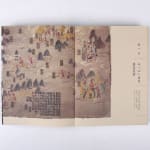
-
(View a larger image of thumbnail 16
)
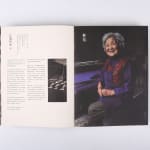
-
(View a larger image of thumbnail 17
)

-
(View a larger image of thumbnail 18
)
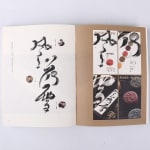
-
(View a larger image of thumbnail 19
)
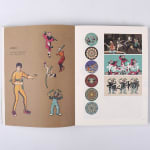
-
(View a larger image of thumbnail 20
)
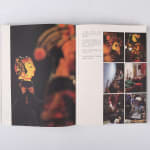
-
(View a larger image of thumbnail 21
)
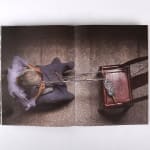
-
(View a larger image of thumbnail 22
)

-
(View a larger image of thumbnail 23
)

-
(View a larger image of thumbnail 24
)

-
(View a larger image of thumbnail 25
)



Documenting a Living Culture
The Power of Action is a book, ethnography, documentary, research project, and a cultural pilgrimage. It stemmed from a simple but ambitious idea, which is to document and promote traditional handicraft, art practices, folk arts, and local customs across China through visiting, interviewing, and recording how cultural traditions and popular arts are practiced, circulated, and sustained within their larger cultural and social contexts. From major cities to the rural hinterlands, the team crisscrossed China over five years to collect an immense body of first-hand materials, made over 200 documentary videos, took over 300,000 photos, and met with over 1,000 artisans. While China is quickly industrializing and catching up with the rest of the developed world, The Power of Action is a timely intervention that allows the posterity to understand and appreciate an important piece of cultural history, lest some these folk and artisanal traditions disappear before they can be properly passed on to the next generation.
From Fieldwork to the Printing Press
In the fall of 2013, the team first travelled to a poor, rural county of Lishui in Zhejiang Province, China, to the project was launched amid the lack of funds, experience, and resources. In the course of gathering materials and expanding knowledge of popular arts, the work of curation has grown more and more important as the team struggled to understand how folk arts and handicrafts are relevant to the Chinese people today. They also come to the realization that the impact of cultural conservation can be amplified if they can also work towards the rebirth and revival of these traditions in decline. Therefore, they developed a framework and organization to promote the practice, dissemination, and development of the arts that were deemed to be at risk. Moreover, the book resulting from years of curation and research makes this important cultural knowledge available to artists, scholars, and even the masses, but also raises awareness among the public about China's living cultural heritage. To this end, the book's design, featuring Smyth sewn binding and beautiful craft paper, reminds readers of the beauty and elegance of craft in our cultural memory and everyday life.
Building a Cultural Enterprise
Armed with a strong sense of purpose, the team was less focused on commercial success and more determined to help craftspeople and artisans who were skilled in the craft but lacked the tools for keeping records of the practice and the cultural knowledge associated with the tradition. Besides participant observation, the team took the time to talk to the practitioners in the field so as to understand the tradition inside out, gaining insights from interviewing the actors and understanding the contexts. Moreover, the curators also sought to learn about these traditions and practices from the modern perspective, so as to pave the way for these ancient art forms to adapt to new social and economic conditions and thrive in contemporary China. The team recruited marketing professionals who worked with local craftspeople and promoted the handicraft and artworks on online marketplace. The revenue allows the work of documentation and research to continue, and provides a more steady stream of income for local artisans who used to be handicapped by limited access to affluent consumers who value traditional handicrafts.
As festivals are regular reiterations of a tradition, a large part of The Power of Action's contentdescribes festivals that are celebrated in different regions of China. Wide-ranging artifacts, even packaging for festive food and festival posters, are included to show how people articulate their identity through cultural and art practices. Therefore, from woodblock prints to baskets, and from pottery to traditional pastries, the book contains a valuable ethnographic record that offers a slice of aesthetics, local customs, and belief systems across China. The project enriches a repertoire of arts and crafts that have continually defined a major cultural dimension of the Chinese people.

